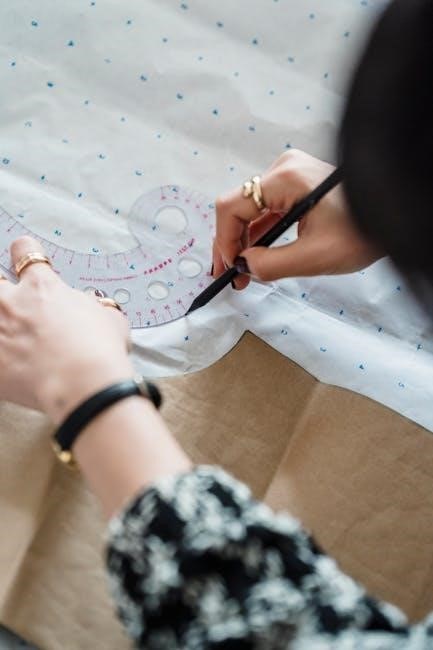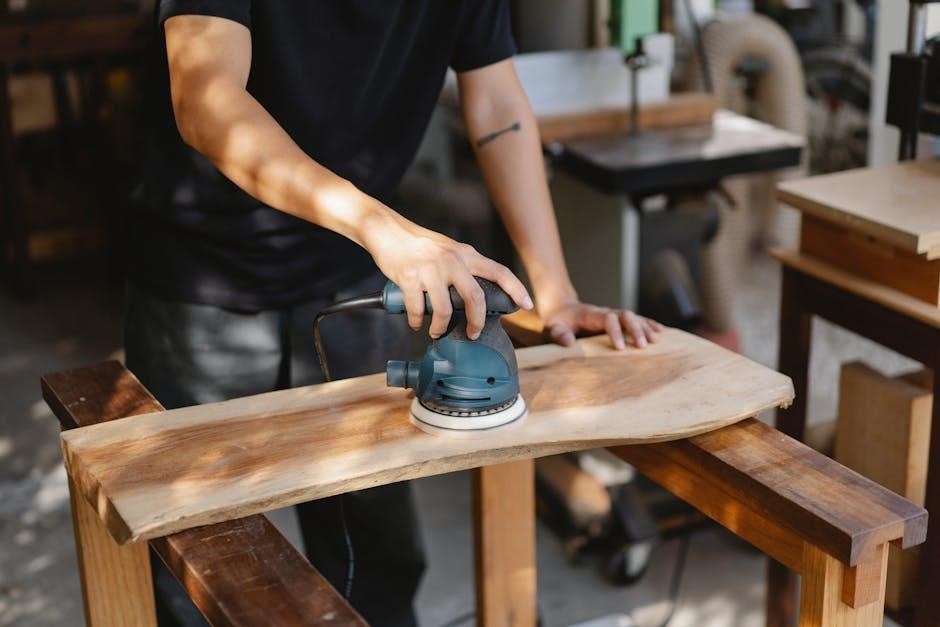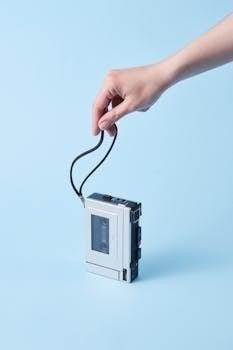Manual Lymphatic Drainage (MLD) certification trains professionals in a gentle, non-invasive technique to enhance lymph flow, reducing swelling and promoting detoxification. It is highly valued in medical, spa, and wellness settings.
What is Manual Lymphatic Drainage?
Manual Lymphatic Drainage (MLD) is a specialized, light-touch technique that stimulates the lymphatic system to enhance lymph flow and promote detoxification. Developed by Dr. Emil Vodder, MLD involves gentle, rhythmic strokes that encourage the movement of lymph fluid through the body, aiding in the removal of toxins and excess proteins. Unlike traditional massage, MLD focuses on the superficial lymphatic vessels, making it a low-pressure, non-invasive modality. It is highly effective for reducing swelling, improving skin health, and supporting immune function. MLD is commonly used in medical, therapeutic, and aesthetic settings, including post-surgical recovery, chronic inflammation, and wellness practices. Its versatility and gentle nature make it a valuable tool for practitioners across various healthcare and beauty industries.
Importance of Certification
Obtaining a Manual Lymphatic Drainage (MLD) certification is crucial for practitioners seeking to enhance their credibility and expertise in this specialized technique. Certification ensures that professionals have undergone rigorous training, mastering the skills to safely and effectively perform MLD. It validates their understanding of lymphatic anatomy, physiology, and the proper application of techniques. Certified practitioners gain recognition from clients, medical professionals, and employers, opening doors to specialized career opportunities. Certification also demonstrates a commitment to ethical practice and adherence to industry standards. For many, it serves as a marketing tool, distinguishing them in competitive fields like wellness, aesthetics, and healthcare. Additionally, certification often includes continuing education, keeping practitioners updated on the latest advancements in MLD. This credential is essential for building trust and confidence in their ability to deliver high-quality, results-driven treatments.
Brief History and Evolution
Manual Lymphatic Drainage (MLD) was pioneered in the 1930s by Dr. Emil Vodder, a Danish physician, who developed this gentle, non-invasive technique to address lymphatic system dysfunction. Initially used to treat chronic conditions like sinusitis and acne, MLD gained recognition for its ability to reduce swelling and promote detoxification. Over the decades, the technique evolved, with Vodder’s work laying the foundation for modern applications in medical, aesthetic, and wellness fields. The certification process emerged to standardize training, ensuring practitioners could safely and effectively apply MLD. Today, MLD certification is sought after globally, with programs incorporating advancements in lymphatic research and hands-on training. Its evolution reflects growing awareness of the lymphatic system’s role in health, making MLD a cornerstone in holistic and integrative medicine. Certification programs now offer specialized training for various applications, from post-surgical care to spa therapies, ensuring MLD remains a vital tool in modern healthcare and wellness practices.

Benefits of Manual Lymphatic Drainage Certification
MLD certification enhances your skill set, enabling you to address diverse client needs, from post-surgical recovery to wellness and aesthetics, while expanding your service offerings and marketability.
Medical Applications
Manual Lymphatic Drainage (MLD) certification is highly beneficial for addressing medical conditions such as lymphedema, post-surgical swelling, and edema caused by cancer treatments. MLD helps reduce fluid retention, alleviates pain, and promotes healing by stimulating the lymphatic system. It is particularly effective in cases where the lymphatic system has been compromised due to surgery or radiation, as it redirects fluid to functioning lymph nodes. This technique is also used to manage chronic inflammation and improve circulation, making it a valuable tool for healthcare professionals. By incorporating MLD into their practice, therapists can provide targeted relief for patients with lymphatic system damage, enhancing their quality of life and supporting overall recovery.
Therapeutic Benefits
Manual Lymphatic Drainage (MLD) certification offers numerous therapeutic benefits, including the reduction of inflammation and the promotion of relaxation. This gentle technique is particularly effective for individuals with inflammatory arthritis, as it provides relief without putting strain on the practitioner’s hands. MLD also aids in detoxification by stimulating the lymphatic system, which plays a key role in removing toxins from the body. Its ability to reduce swelling and improve circulation makes it a valuable tool for enhancing overall well-being. Additionally, MLD is known to alleviate stress and promote a sense of calm, making it a popular choice for both therapeutic and wellness settings. By mastering MLD, practitioners can offer their clients a non-invasive, effective method for achieving physical and emotional balance.
Aesthetic and Wellness Uses
Manual Lymphatic Drainage (MLD) certification opens doors to a wide range of aesthetic and wellness applications. It is highly sought after in spas and skincare practices for its ability to improve skin elasticity, reduce puffiness, and alleviate acne and rosacea. MLD gently stretches the skin to stimulate lymphatic flow, enhancing detoxification and promoting a brighter, healthier complexion. This technique is particularly popular in post-surgical care, as it helps reduce edema and supports recovery. Beyond aesthetics, MLD is a powerful tool for overall wellness, offering relaxation, stress relief, and improved circulation. By incorporating MLD into their practice, professionals can attract clients seeking natural, non-invasive methods for enhancing beauty and well-being. This certification not only expands service offerings but also positions practitioners as experts in holistic skincare and wellness.

The Certification Process

MLD certification typically involves a 5-10 day course, costing around $5,000, with a mix of theoretical and hands-on training, preparing professionals to skillfully apply MLD techniques.
Prerequisites for Enrollment
Enrolling in an MLD certification program typically requires a background in a related field, such as massage therapy, nursing, or esthetics. Many programs mandate a valid professional license, ensuring participants have foundational knowledge of anatomy and physiology. Some schools may also require prior education in manual therapies or healthcare. Practical experience in hands-on modalities is often beneficial but not always mandatory. Additionally, familiarity with lymphatic system basics can enhance learning; Certain programs may specify prerequisites like completing introductory courses in lymphology or having a minimum number of hours in related training. Overall, prerequisites ensure students are adequately prepared to master MLD techniques effectively.
Course Structure and Duration
Manual Lymphatic Drainage (MLD) certification courses vary in duration, typically ranging from 2 to 5 days, with some programs offering online or hybrid formats. The structure usually combines theoretical instruction with hands-on training, ensuring a comprehensive understanding of lymphatic anatomy, physiology, and drainage techniques. Practical sessions are emphasized, allowing participants to master strokes and protocols under instructor guidance. Many programs include case studies and demonstrations to enhance learning. Courses may also offer continuing education units (CEUs) for licensed professionals. The curriculum is designed to equip students with the skills to perform MLD safely and effectively, addressing various applications, from wellness to medical conditions. Whether in-person or online, the focus remains on providing a balanced mix of knowledge and practical expertise to prepare students for certification.

Certification Requirements and Process
To obtain Manual Lymphatic Drainage (MLD) certification, students typically must meet prerequisites, such as being a licensed healthcare or wellness professional (e.g., massage therapist, esthetician, or nurse). The certification process involves completing a training program, which may range from 40 to 50 hours, depending on the provider. Courses are often structured with a mix of theoretical lectures and hands-on practice, ensuring mastery of MLD techniques. Upon successful completion, students receive a certification, such as Certified Manual Lymph Drainage Therapist (CMLDT). Some programs also offer continuing education units (CEUs) for professional development. Certification requirements may vary by institution, but most emphasize practical proficiency and understanding of lymphatic anatomy and physiology. Post-certification, professionals may need to complete continuing education to maintain their credentials.

Techniques and Methods in MLD
MLD techniques involve gentle, rhythmic strokes to stimulate lymph nodes and vessels, promoting detoxification and reducing inflammation. The Vodder method is a cornerstone of MLD practice.
The Vodder Technique
The Vodder Technique, developed by Dr. Emil Vodder, is the foundation of Manual Lymphatic Drainage (MLD). It involves light, rhythmic strokes that stimulate lymph nodes and vessels, enhancing lymph formation and promoting drainage in both superficial and deep systems. This method is highly effective for reducing swelling, detoxification, and improving overall lymphatic function. Widely recognized in medical and spa settings, the Vodder Technique is gentle enough for sensitive clients yet powerful for therapeutic applications. Certification programs often emphasize mastering these strokes, ensuring practitioners can apply them safely and effectively. The technique’s versatility makes it a cornerstone of MLD, suitable for wellness, aesthetics, and post-surgical care. Proper training ensures adherence to Vodder’s original principles, maintaining the integrity and efficacy of this transformative modality.
Basic and Advanced Strokes

Manual Lymphatic Drainage (MLD) certification includes training in both basic and advanced strokes, which are essential for effectively stimulating the lymphatic system. Basic strokes, such as the “stationary circle” and “pump,” are gentle, light-touch techniques designed to encourage lymph flow without applying pressure. These strokes are foundational and are typically used to clear pathways before addressing specific areas of congestion. Advanced strokes, such as the “scoop” and “rotary,” build on these basics, incorporating more dynamic movements to address deeper lymphatic vessels and complex conditions like lymphedema. Proper execution of these strokes requires precision and sensitivity, ensuring they are applied in harmony with the body’s natural rhythms. Certification programs emphasize mastering both basic and advanced techniques, enabling practitioners to tailor treatments to individual client needs, from wellness and aesthetics to post-surgical recovery and chronic inflammation management.
Practical Training and Hands-On Experience
Practical training and hands-on experience are cornerstone components of Manual Lymphatic Drainage (MLD) certification programs. These courses typically include extensive hands-on practice, allowing students to master the techniques under the guidance of experienced instructors. Many programs require students to both give and receive treatments during class, ensuring a deep understanding of the modality. The training often involves live demonstrations, case studies, and interactive sessions to apply the Vodder technique and other methods effectively. This hands-on approach ensures that practitioners develop the precision and sensitivity needed to work with diverse client needs, from wellness and aesthetics to medical conditions like lymphedema. Certification programs also emphasize real-world application, preparing students to integrate MLD into their professional practice confidently and safely. This experiential learning is crucial for achieving competency and delivering effective treatments.

Career Opportunities and Marketing Strategies
Manual Lymphatic Drainage certification opens doors to diverse career opportunities in spas, wellness centers, and medical settings, while enabling professionals to market themselves as specialized therapists, attracting a loyal client base.
Expanding Your Practice
Manual Lymphatic Drainage (MLD) certification significantly expands your practice by offering specialized services in medical, spa, and wellness settings. By mastering MLD, you can cater to diverse client needs, from post-surgical recovery to chronic inflammation management. This technique complements other modalities like massage and fascial work, allowing you to create comprehensive treatment plans. MLD’s gentle, non-invasive approach attracts clients seeking natural detoxification and relaxation. Additionally, its effectiveness in reducing swelling and improving skin health makes it a sought-after service in aesthetic and holistic practices. With MLD certification, you can differentiate yourself in a competitive market, attracting a loyal clientele. This versatile skill set enables you to work with various populations, including those with lymphedema, inflammatory conditions, and post-operative recovery needs, ensuring a thriving and diverse practice.
Marketing Your Certification
Marketing your Manual Lymphatic Drainage (MLD) certification is essential to attract clients and stand out in the competitive wellness and medical industries; Highlighting your certification on your website, social media, and professional profiles showcases your expertise. Use credentials like Certified Manual Lymph Drainage Therapist (CMLDT) to build trust and credibility. Emphasize the unique benefits of MLD, such as its ability to reduce inflammation, promote detoxification, and enhance skin health. Target niche markets, including post-surgical patients, individuals with lymphedema, and those seeking aesthetic wellness. Collaborate with healthcare providers, spas, and wellness centers to expand your reach. Offer workshops or demonstrations to educate potential clients about MLD’s advantages. Leverage online platforms to share testimonials, success stories, and educational content to establish yourself as a specialist in this field.

The Future of Manual Lymphatic Drainage
Manual Lymphatic Drainage is evolving rapidly, with advancements in techniques and integration with holistic medicine, offering innovative solutions for health and wellness in the modern era.
Emerging Trends and Advancements
Manual Lymphatic Drainage (MLD) is experiencing significant advancements, with a growing emphasis on hybrid and online training formats, making certification more accessible. The integration of MLD with other therapies, such as fascial work and holistic practices, is expanding its applications. Research into new hand techniques and technologies is revolutionizing lymphedema treatment, offering improved outcomes for patients. The rise of teletraining and live webinars is modernizing education, allowing practitioners to stay updated without in-person attendance. Additionally, the incorporation of MLD into aesthetic and wellness practices is gaining popularity, particularly in post-surgical and skincare settings. These trends highlight the evolving nature of MLD, ensuring it remains a cutting-edge modality in both medical and holistic fields. As awareness grows, so does the demand for certified professionals, driving innovation and growth in the industry.
Role in Holistic and Integrative Medicine
Manual Lymphatic Drainage (MLD) plays a vital role in holistic and integrative medicine by addressing the body as a whole. It complements therapies like massage, acupuncture, and yoga, enhancing overall well-being. MLD’s gentle, non-invasive nature makes it ideal for promoting relaxation, reducing inflammation, and supporting the body’s natural detoxification processes. In integrative medicine, MLD is often used alongside traditional treatments to aid in recovery, particularly for patients with chronic conditions or those undergoing surgery. Its ability to stimulate lymph flow aligns with holistic principles of balancing and harmonizing bodily systems. As awareness of MLD grows, it is increasingly incorporated into wellness programs, spas, and medical practices, offering a bridge between conventional and alternative approaches to health. This integration underscores its potential to enhance patient outcomes and promote long-term wellness.

Choosing the Right Certification Program
Selecting the right MLD certification program involves ensuring it is accredited, offers hands-on training, and is taught by experienced instructors to provide a comprehensive understanding of techniques and applications.
Accreditation and Recognition
Accreditation is crucial when selecting an MLD certification program, as it ensures the training meets industry standards and is recognized by professional organizations. Look for programs accredited by reputable bodies such as the American Occupational Therapy Association (AOTA) or state licensing boards. Recognized institutions, like Klose Training, offer certifications that are widely accepted and respected. Many programs are approved by state boards of nursing, physical therapy, and massage therapy, ensuring credibility across various healthcare fields. Certification from an accredited program enhances your professional credentials, making you a more competitive practitioner. Additionally, some certifications, such as the Certified Manual Lymph Drainage Therapist (CMLDT), are recognized internationally, further validating your expertise. Always verify the program’s accreditation status before enrolling to ensure it aligns with your career goals and industry requirements.
Program Comparison and Selection
When selecting a Manual Lymphatic Drainage (MLD) certification program, it’s essential to compare factors like program length, format, and curriculum. Some programs, such as those offered by Klose Training, are 5-day, 40-hour courses with a mix of theoretical and hands-on training. Others, like the Dr. Vodder School, provide more extensive post-graduate training. Consider whether the program offers in-person, hybrid, or online options, as this affects learning flexibility. Additionally, check if the program includes CEUs (Continuing Education Units) and certification types, such as CMLDT or C-MLD. Look for programs accredited by recognized bodies and taught by experienced instructors. Some programs cater to specific professionals, like licensed massage therapists or estheticians, while others are designed for broader healthcare practitioners. Comparing these elements ensures you choose a program that aligns with your career goals and provides comprehensive training.
Manual Lymphatic Drainage certification empowers professionals to enhance client well-being, offering versatile benefits for medical, aesthetic, and wellness applications, while advancing their career in a growing, in-demand field.
Final Thoughts
Manual Lymphatic Drainage certification is a valuable investment for professionals seeking to enhance their skills in promoting health and wellness. By mastering this gentle, non-invasive technique, practitioners can address a wide range of conditions, from lymphedema and inflammation to post-surgical recovery and aesthetic concerns. The certification process, though rigorous, equips individuals with the knowledge and hands-on experience necessary to deliver effective treatments. As the demand for holistic and integrative therapies grows, MLD certification stands out as a niche expertise, offering both personal and professional fulfillment. It not only expands career opportunities but also empowers practitioners to make a meaningful impact on clients’ lives, fostering long-term well-being and satisfaction.
Encouragement to Pursue Certification
Pursuing Manual Lymphatic Drainage (MLD) certification is a rewarding decision that can elevate your career and expand your ability to help others. This specialized training opens doors to diverse opportunities in healthcare, wellness, and aesthetics, allowing you to address conditions like lymphedema, inflammation, and post-surgical recovery. By mastering MLD, you gain a unique skill set that sets you apart in your field, attracting clients seeking holistic and effective treatments. The growing demand for lymphatic therapies makes this certification a valuable asset, offering both personal fulfillment and professional growth. With comprehensive training and hands-on experience, you’ll be empowered to make a meaningful impact on your clients’ well-being. Embrace this opportunity to enhance your expertise and contribute to the evolving field of lymphatic care.



